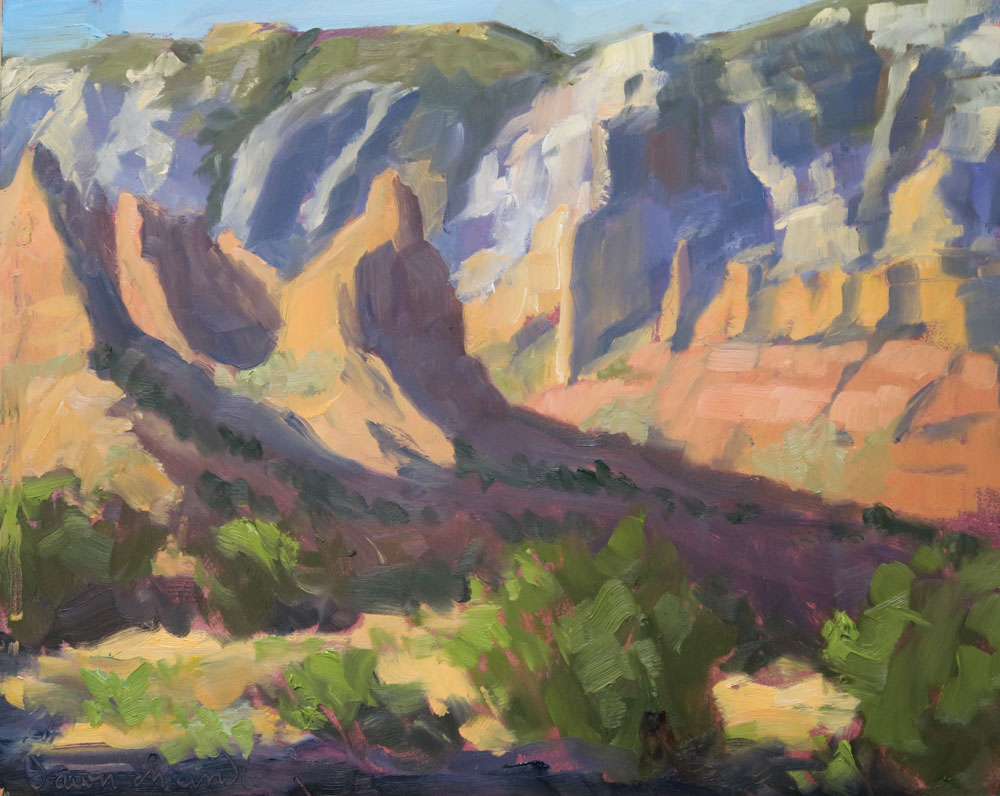 One of the many things I love learning from other artists is what their daily studio practice entails. What rituals they embrace to get into the flow of creativity.
One of the many things I love learning from other artists is what their daily studio practice entails. What rituals they embrace to get into the flow of creativity.
Often when the subject of creative flow and ritual, comes up, writer Stephen King’s name is mentioned. Stephen King has authored nearly 100 books (!!) Maybe this is how and why he’s able to be so prolific:
There are certain things I do if I sit down to write. I have a glass of water or a cup of tea. There’s a certain time I sit down, from 8:00 to 8:30, somewhere within that half hour every morning. I have my vitamin pill and my music, sit in the same seat, and the papers are all arranged in the same places. The cumulative purpose of doing these things the same way every day seems to be a way of saying to the mind, ‘you’re going to be dreaming soon.’
— Stephen King, quoted in Manage Your Day-to-Day.
So it was with particular interest during my class last month at the Sedona Art Center that I listened to Robert Burridge as he described his daily studio practice. His involves writing his “morning pages” (à la Julia Cameron, whose book The Artist’s Way was pivotal for RB).
Next, he goes into his studio and spends a few minutes pulling random words or phrases out of the dictionary and quickly painting the meaning of each word.
6 words.
3 minutes per word.
18 minutes total.
Black and white paint only.
Ready?
GO!
Here are mine:
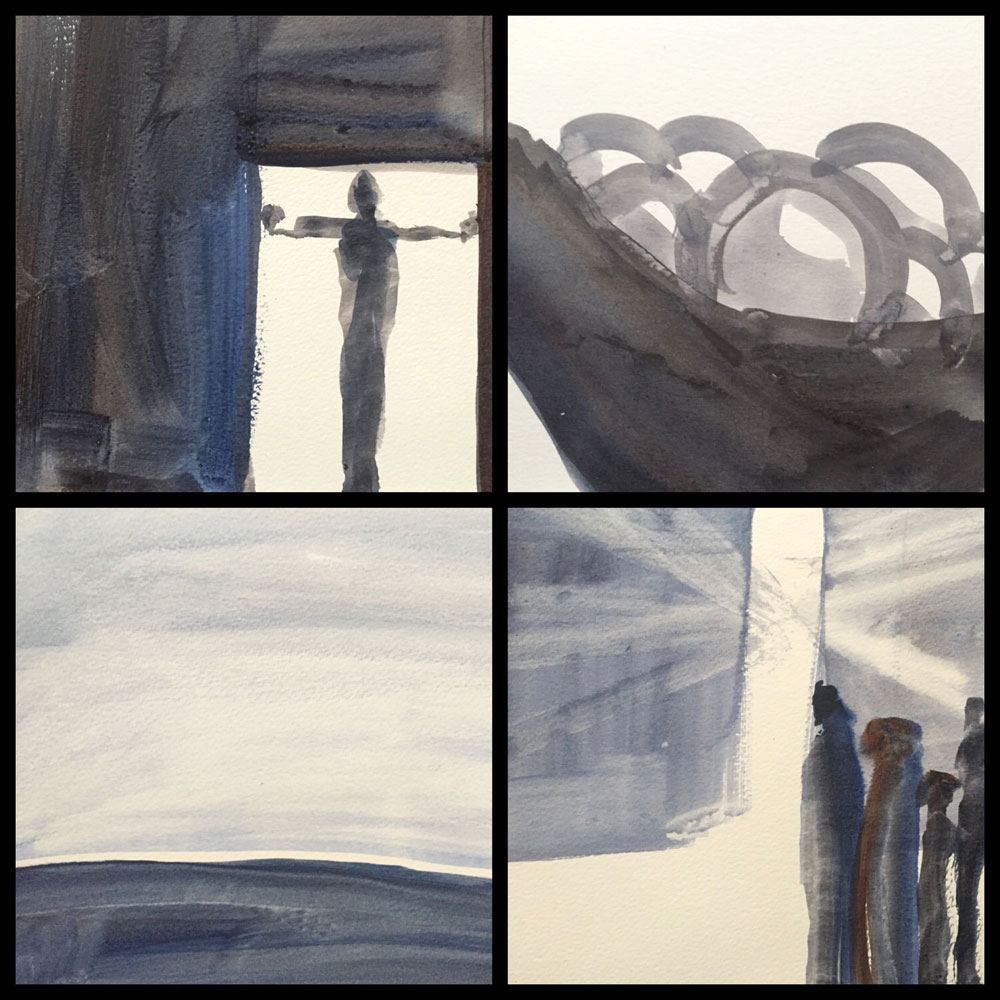
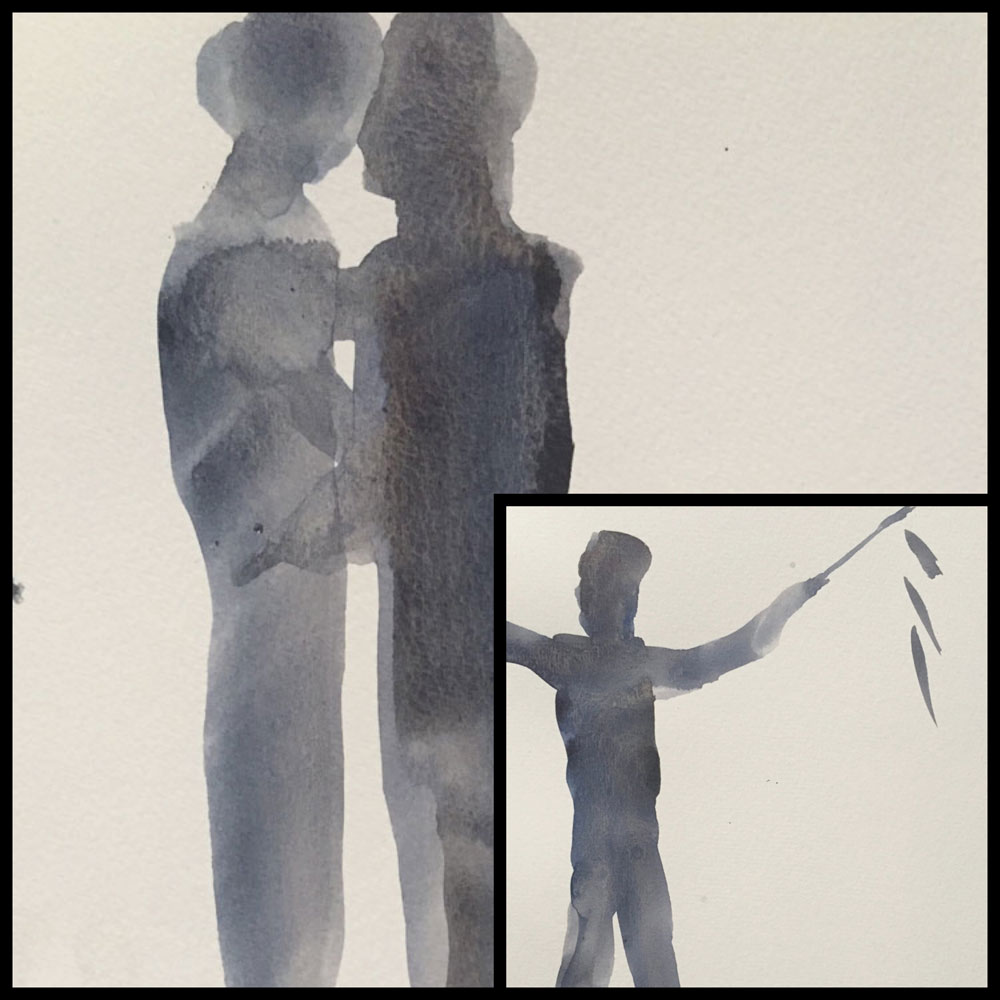
The words and phrases captured above?
Gather. Kiss. Claustrophobic. “I love being an artist!” Calm. Immigration.
(Can you figure out which goes with which?)
(Also, note that I didn’t have pure black paint with me, so instead I mixed a blackish color by combining Payne’s Grey with Burnt Umber.)
What’s terrific about this exercise is that it doesn’t give you any time to overthink. You come up with a concept and BOOM! Get it down! The goal, of course, is to visually explain a meaning as simply and quickly as possible.
After 18 minutes of this, you’ve got a creative flow going.
However, I’ve just jumped ahead of myself…
Recall that the focus of this class was on the abstracting the figure.
And so for two full days of class RB arranged for two models to pose for us.
Each of these figure drawing sessions started with several one-minute poses, then five-minute poses, ten-minute poses, and eventually 20- or 30-minute poses, with the models adorned in costumes in the longer poses. Per traditional figure-drawing classes, RB urged us to note first, the gesture of each pose — the main movement or thrust or line of the figure.

Despite my efforts of late to embrace a Buddhist-like disattachment from the ego, I admit I was stoked when, several hours into the figure drawing exercises, RB walked by my table, surveyed my drawings, and said approvingly, “I can tell this isn’t your first rodeo.”
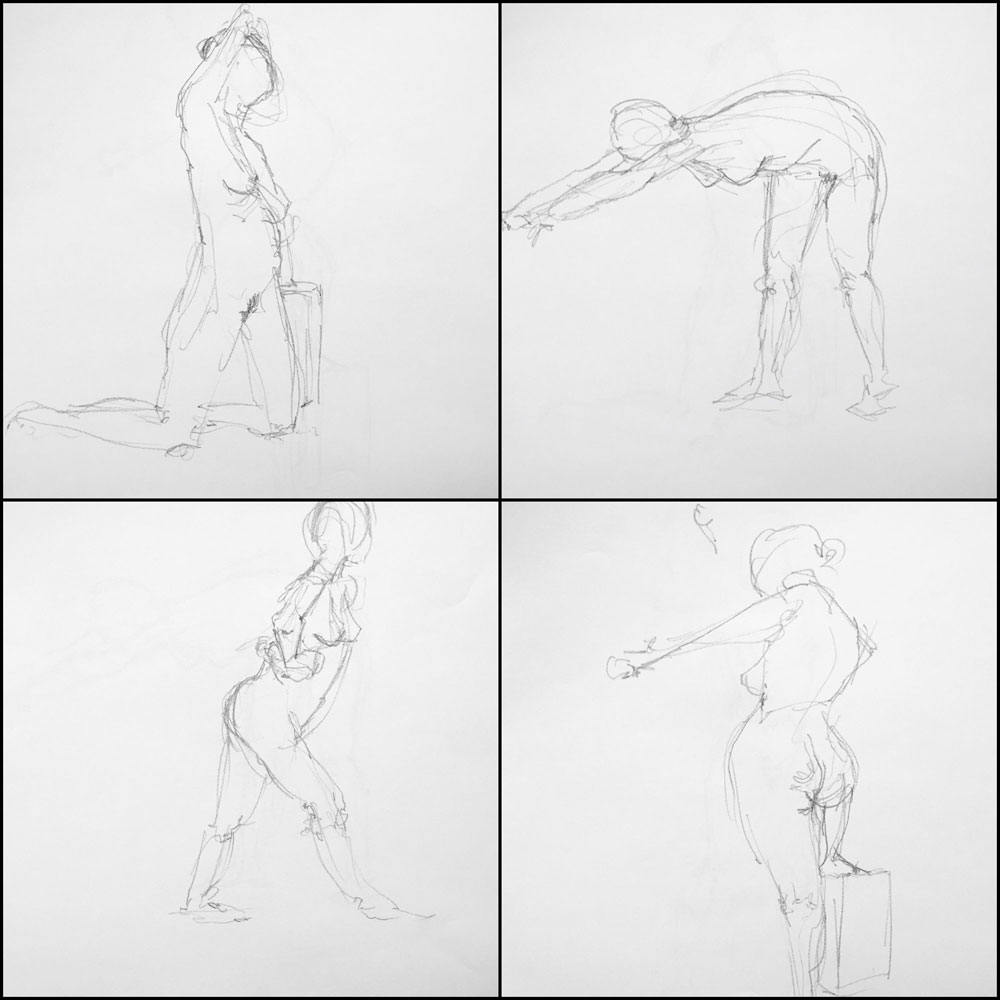
Maybe it’s those handful of Monday evening’s spent at live figure drawing sessions this year. Maybe it was that, just before leaving for AZ I found again my favorite figure-drawing tool. Maybe it was the fact that these models really know what they’re doing and what makes for a fabulous pose. Or maybe my muse was just in a ebullient state. All I know is that I was on a roll when it came to drawing the figure that week.
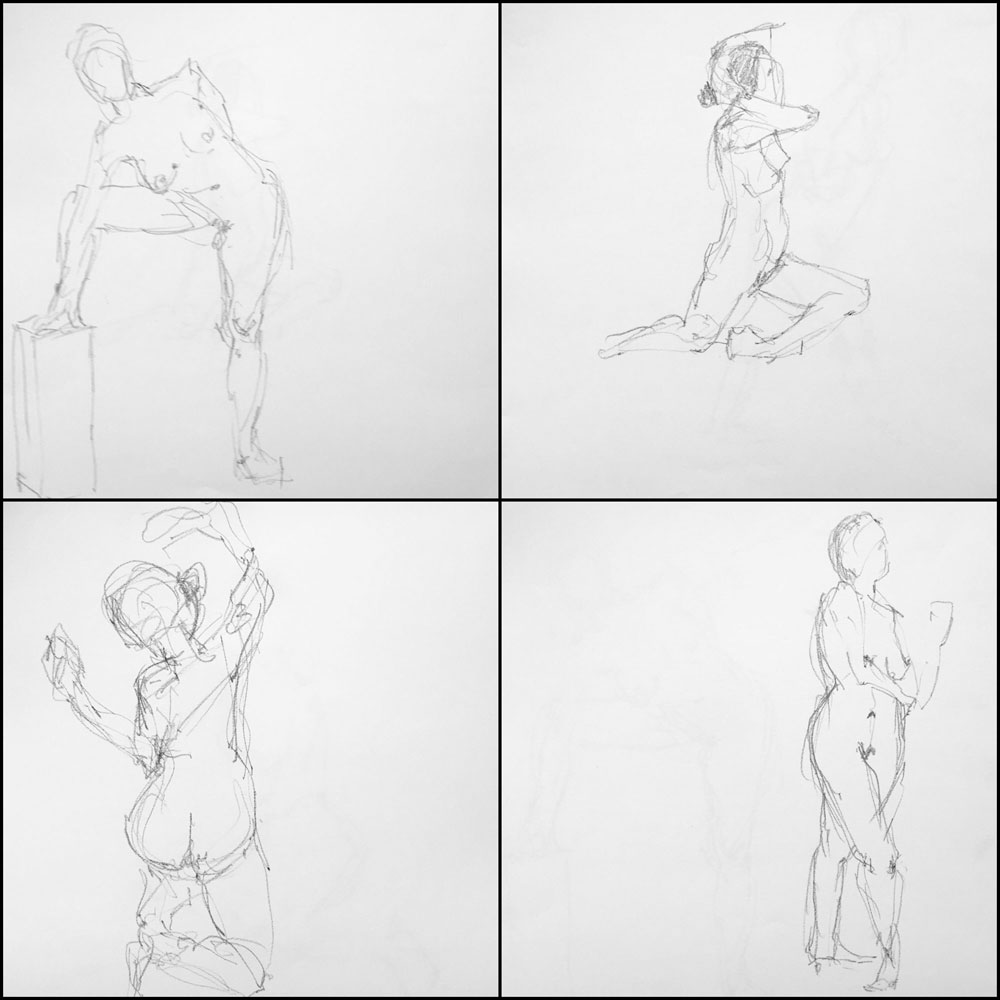
With the longer poses, we moved from drawing the figure to painting the figure with black/white/grey, paying special attention to lights and darks — essentially what is being illuminated by light, and what is in shadow.
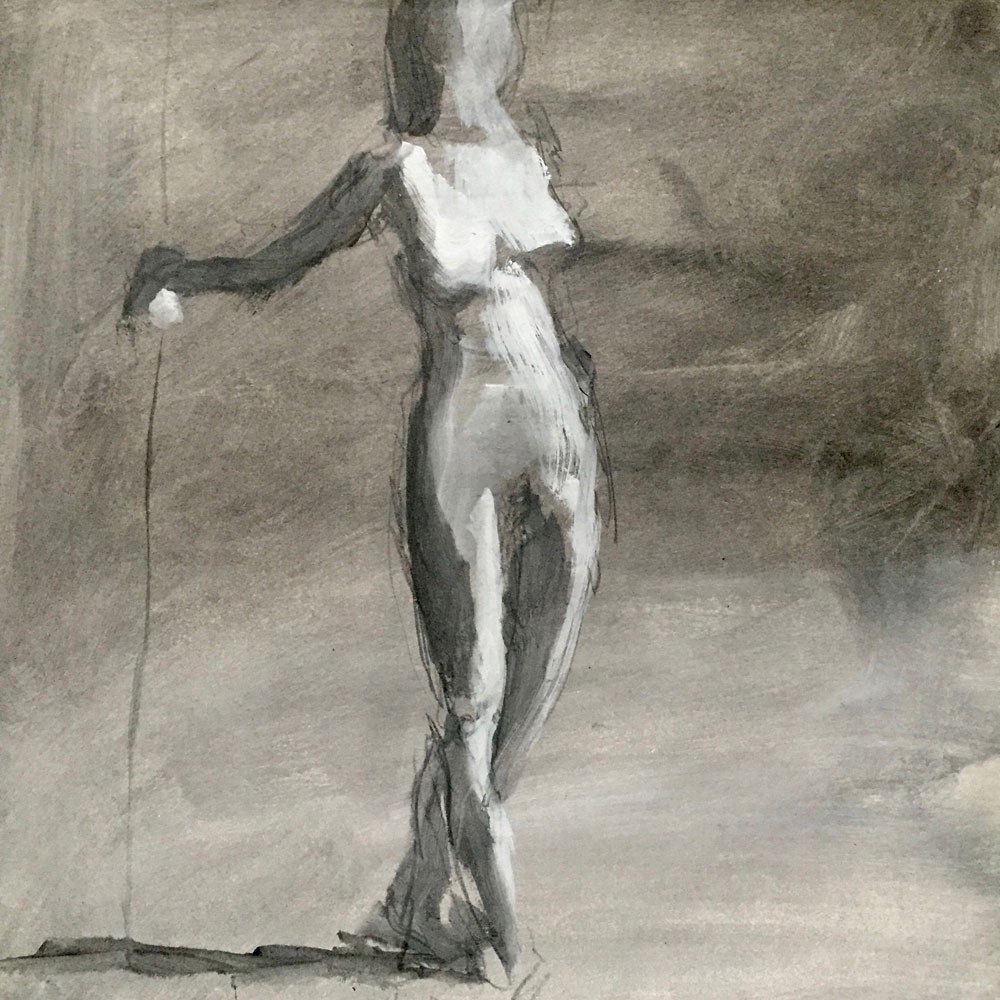
And finally, we moved on to color.
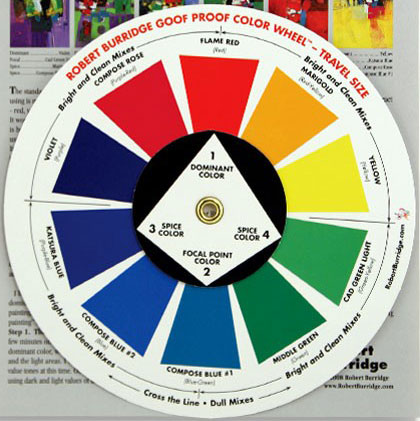 While there are all kinds of color theories and color wheels out there, RB has developed his own, highlighting combinations that especially appeal to him. His combinations center on contrasting color pairings, with two more related colors added to give emphasis or POP. So four main colors, all of which could be tweaked with white and black.
While there are all kinds of color theories and color wheels out there, RB has developed his own, highlighting combinations that especially appeal to him. His combinations center on contrasting color pairings, with two more related colors added to give emphasis or POP. So four main colors, all of which could be tweaked with white and black.
While no one was required to use RB’s color-whee during these exercisesl, one of my goals was to play and experiment with color, so I was happy to make use of his wheel with small, playful studies (see top image). Again, we had a time limit, to get us to work quickly and loosely, without overthinking. (Apparently a goal for many of the artists there that week was to “loosen up” with paint.)
After experimenting with these small color abstracts, we returned to the figure, focusing on gesture, light and dark, and now introducing color.
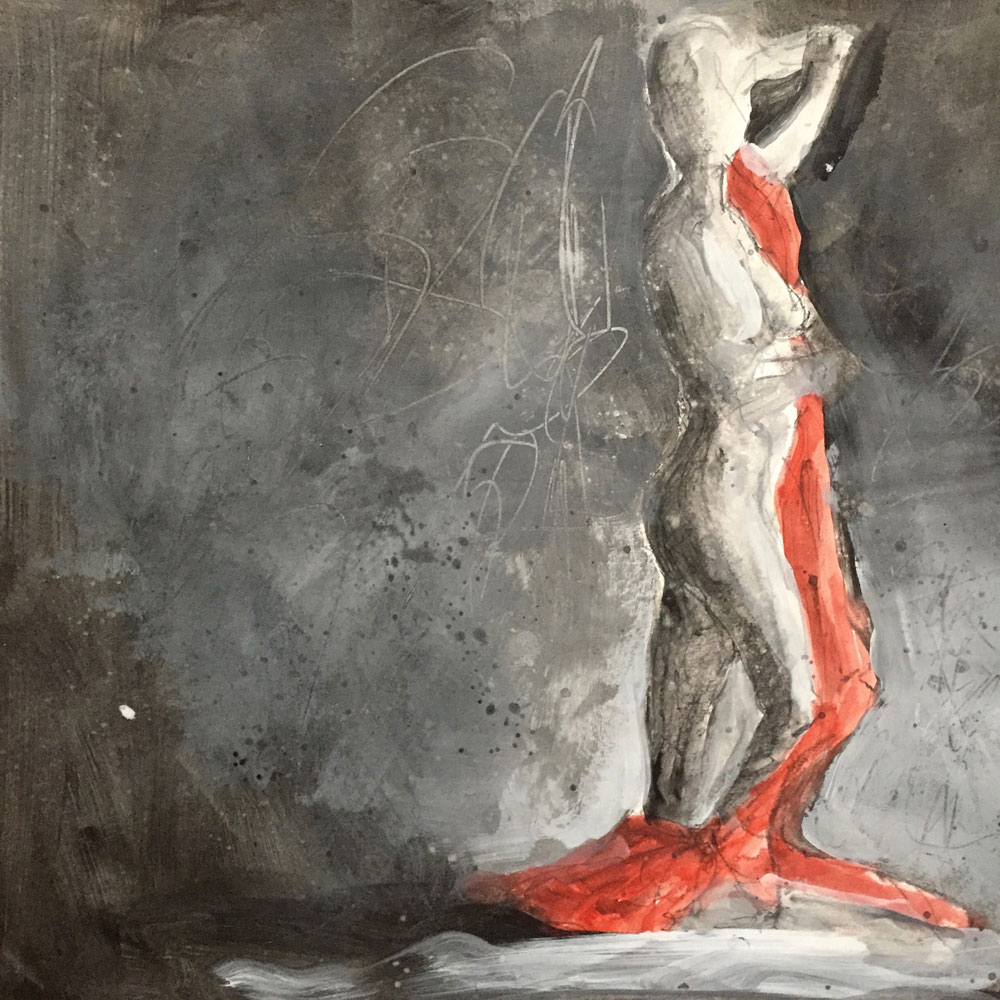
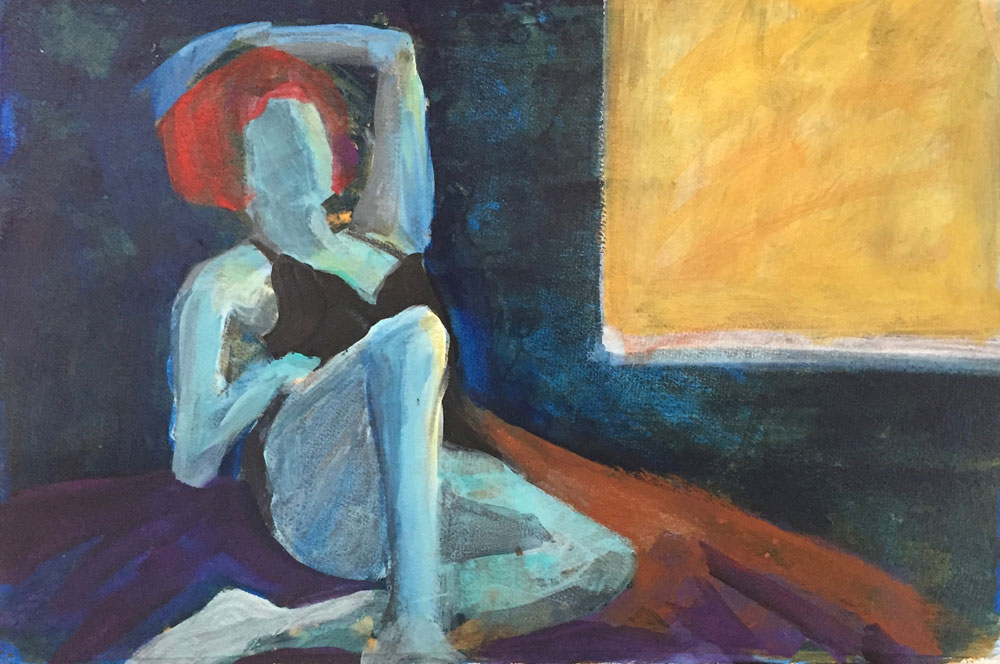
And here’s something that was kind of surprising to me: At the end of each day I was EXHAUSTED. Just SPENT. Here I’d brought my computer and all kinds of “office work” projects to work on in the evenings after class. But… Nuh-Uhh. No. Way. Not. Ever.
It was surprising because I, obviously, paint for many hours most days back home. But here in the classroom as a student, it was intense focusing, with no distraction (except for the bowl of chocolates some evil classmate placed inches from my work station…). To be able to focus so keenly for so many hours was incredibly tiring mentally.
And yet… When I got back to my room, all I wanted to do was paint some more. I was so creatively energized by the day’s exercises, I just had to immerse myself in more creative play. I had ZERO energy for Xcel spreadsheets, but still plenty of energy for pushing around color.
So I did… in my sketchbook, with watercolor pencils:
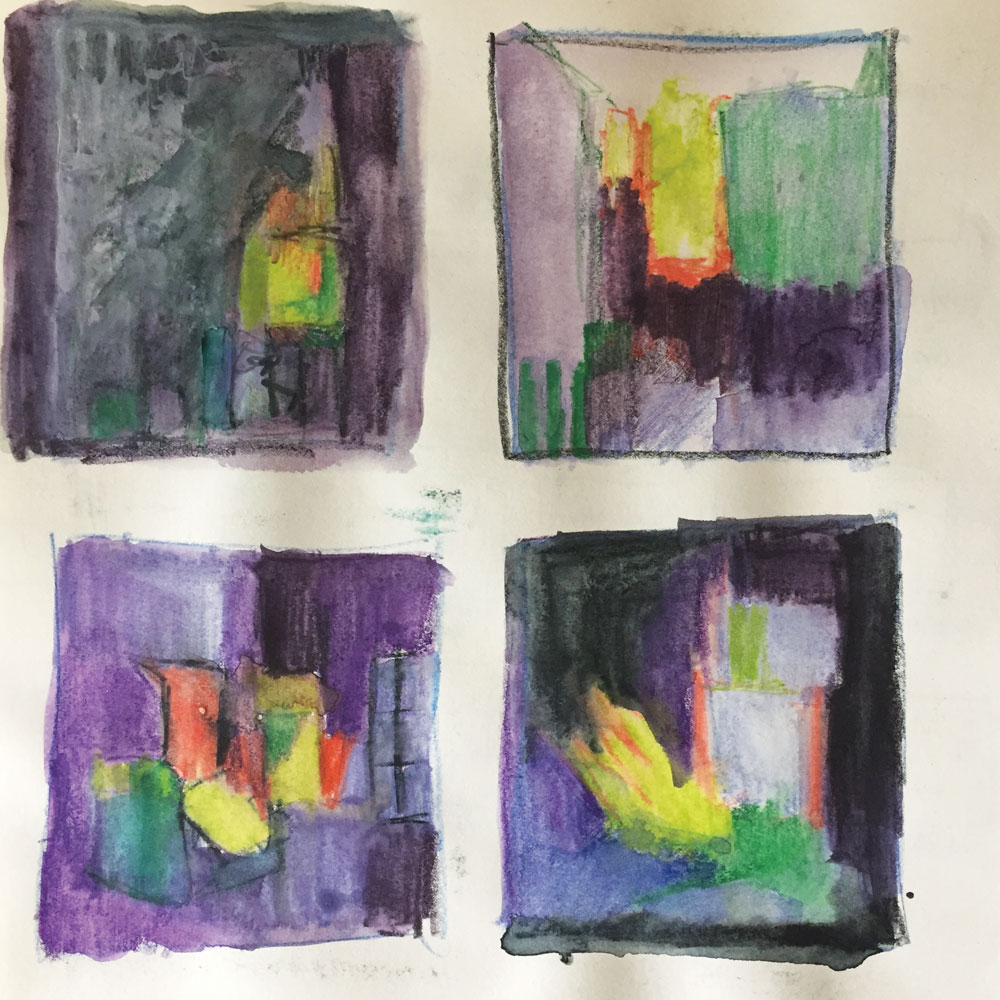
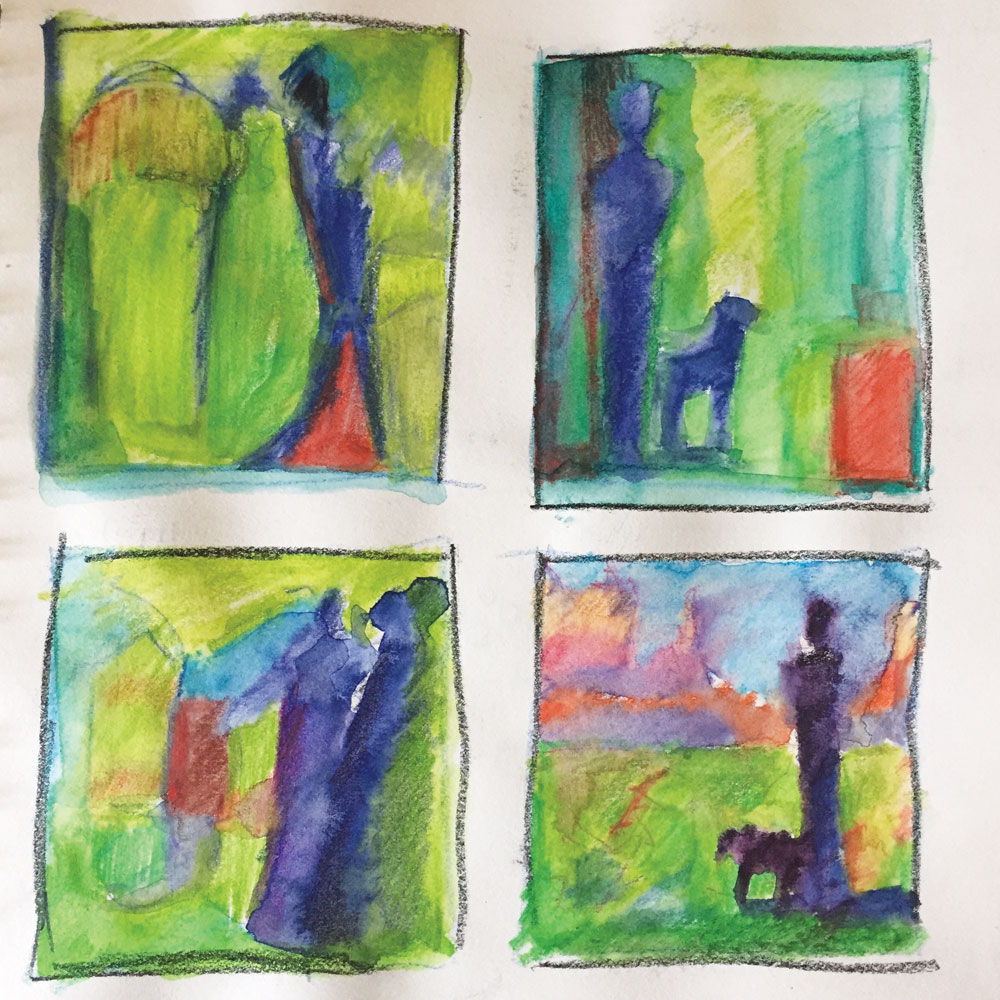
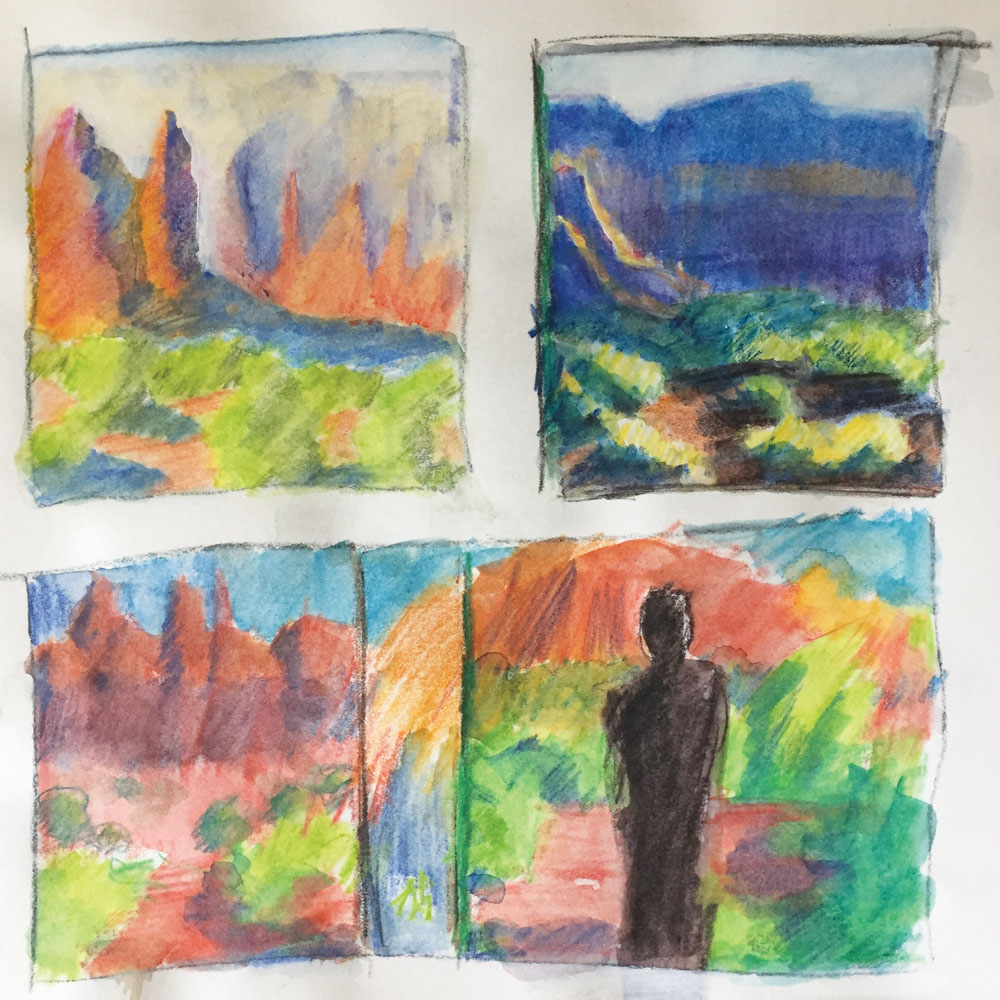
And even ventured outside one evening to push around color in a more “traditional” manner….
__________________________________________________
Related posts:
creative change: shaking things up
